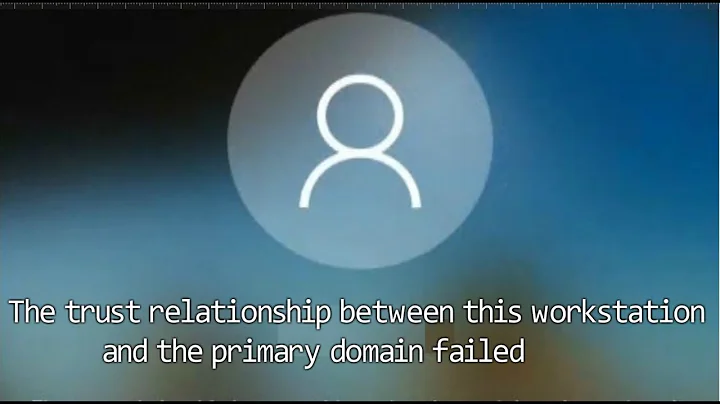"reboot" or "shutdown -r now": what restart command is safer?
Solution 1
For Red Hat systems, there is no functional difference between reboot and shutdown -r now.
Do whatever is easier for you.
Solution 2
Shutdown is preferable because it allows you to specify the reason for the drastic action -- something you should always do. The message will be recorded in the log(s) for posterity. For example:
shutdown -r now 'Kernel upgrade requires reboot'
You can also perform a scheduled reboot -- by specifying something other than now as the reboot time:
shutdown -r 22:00 'Work around kernel memory leak'
Then your users will get periodic reminders to get out and so on -- the process will be more orderly and professional.
Solution 3
Using reboot is safer.
Using reboot your intent is clear and there is no way to mistype it for something else like shutdown -t now which could leads to a few headache if you are using on a remote server with limited control.
Solution 4
If you take a look, in RHEL 7 both /sbin/shutdown and /sbin/reboot are actually just symlinks to systemd's systemctl command. So, use whatever you want. No functional difference as ewwhite told, not even in earlier RHEL releases which did not yet use systemd.
Solution 5
For modern RHEL you are recommended to use the systemctl command as summarised here: [recent] RHEL distributions should use the new systemctl command to issue poweroff/reboot. As stated in the manpages of reboot and shutdown they are "a legacy command available for compatibility only.".
However, if you use many different distributions, or distributions of various vintages, then perhaps stick with shutdown -r now 'reason for shutdown'.
The main reason to use reboot would be to avoid the risk of forgetting to add the -r when using shutdown -r on a remote machine, which could easily result in not being able to login again and having to use the remote admin (if available) to restart the machine.
Related videos on Youtube
dandan
Updated on September 18, 2022Comments
-
dandan over 1 year
We have in our organization around ~500 RedHat Linux machines.
On all the machines we installed applications and services under
/etc/init.d, and oracle RAC servers. We intend to perform yum updates on all machines and after that take a reboot.So I was wondering what command is safer:
rebootor
shutdown -r now-
Henrik Pingel almost 8 yearsPossible duplicate of: What is the difference between reboot , init 6 and shutdown -r now?
-
Stefan Lasiewski almost 8 yearsIs this RHEL6 or RHEL7?
-
dandan almost 8 yearswe have all kind - as redhat 4,5,6,7
-
underscore_d almost 8 yearsLet's rewind: Why do you think there might be a difference in safety?
-
Shiva Saurabh almost 8 years@underscore_d: it's not unreasonable to think that one might be an "internal-use-only" command that doesn't do all the same clean shutdown steps. E.g. maybe one uses the other after doing some initial clean-shutdown steps. Of course, the man page explains that
rebootis just a legacy command and still exists only for backwards compat. -
 Insane almost 8 years@knowhy A question can't be a duplicate of a question on a different site..
Insane almost 8 years@knowhy A question can't be a duplicate of a question on a different site..
-
-
 Insane almost 8 yearsBut one makes you type more and is fundamentally 'cooler'!
Insane almost 8 yearsBut one makes you type more and is fundamentally 'cooler'! -
ruakh almost 8 yearsI don't find this argument very compelling: it's obvious that
/sbin/shutdownand/sbin/rebootdo not behave the same in all cases (in particular:/sbin/shutdowndoesn't reboot by default!), so if they're symlinked to the same executable, then that executable must be examining itsARGV[0]and adjusting its behavior accordingly. While that certainly reduces the risk of unintentional differences, it's not compelling evidence that there are no intentional functional differences that the OP might want to know about. -
 mckenzm almost 8 yearsBeware of assuming a symlink implies equivalence, particularly if there are differing names involved.
mckenzm almost 8 yearsBeware of assuming a symlink implies equivalence, particularly if there are differing names involved. -
user1686 almost 8 yearsruakh is right – think about it for a moment, even though
rebootis symlinked tosystemctl, you cannot use e.g.reboot status whatever.servicelike you would with the latter, can you? -
Burhan Khalid almost 8 yearsOne requires super user access, the other can be executed by any user (unless restricted) from an X session.
-
 user almost 8 yearsAt least on Debian (though I'll readily admit I don't know about Red Hat, but Janne Pikkarainen's answer suggests it may be similar but different),
user almost 8 yearsAt least on Debian (though I'll readily admit I don't know about Red Hat, but Janne Pikkarainen's answer suggests it may be similar but different),halt,rebootandpoweroffdo not accept a reason message nor a time, as Mikhail T. explained. I think I would consider one tool to be able to do something that another doesn't allow for to be a "functional difference". -
 RoughTomato over 5 yearsIMHO underrated answer. Very often we forget how important it is to make intentions clear and how much time and cuss words it saves in the long run!
RoughTomato over 5 yearsIMHO underrated answer. Very often we forget how important it is to make intentions clear and how much time and cuss words it saves in the long run!









